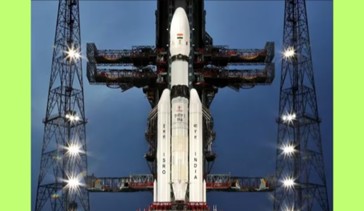India-Japan Chandrayaan-5 Mission Enters Design Phase
India-Japan Chandrayaan-5 Mission Enters Design Phase
Why in the News ?
India and Japan have begun the preliminary design phase of the Chandrayaan-5/LUPEX mission, aimed at lunar polar water exploration. With a 2027–28 launch timeline, the mission focuses on surface and subsurface water detection and in-situ analysis.
Mission Overview and Objectives:
- Chandrayaan-5, also called LUPEX (Lunar Polar Exploration), is a joint mission by ISRO and JAXA.
- It aims to detect water and water-ice on the Moon’s south pole, both on the surface and subsurface.
- The mission will launch on Japan’s H3 rocket around 2027–28.
-
Approved by the Indian Cabinet in March 2024, it follows the success of Chandrayaan-3 and precedes Chandrayaan-4, which will be a sample-return mission.
Roles, Instruments, and Design Progress
- ISRO is developing the lander, while JAXA is building the 350 kg rover, equipped with seven scientific instruments.
- Instruments include contributions from ESA (mass spectrometer) and NASA (neutron spectrometer), both under design.
- One large instrument will have four sensors, one by ISRO and three by JAXA.
- The rover will drill, sample regolith, and conduct in-situ analysis of water content and quality.
Technical Details and Future Plans
- The rover is designed to climb 25° slopes and move on rugged lunar terrain.
- Battery charging is planned pre- and post-sample collection.
- Mission duration is 5 months (200 days), with hopes to extend life and possibly reach the Moon’s far side.
- A JAXA team is visiting ISRO to discuss collaboration details.
About Chandrayaan-5 :● Chandrayaan-5 is India’s upcoming lunar mission featuring a 350 kg rover. ● It is a joint venture between ISRO and JAXA (India and Japan). ● Aims to explore the Moon extensively and strengthen technologies for human landings by 2040. ● Includes an advanced lander, sample return capability, and builds on Chandrayaan-3 & 4 successes. Key Terms Related to Chandrayaan-5 : ● Chandrayaan-5 / LUPEX: Joint Indo-Japanese lunar mission. ● ISRO & JAXA: Collaborating space agencies. ● Lunar Water: Primary target of exploration. ● Spectrometers: From ESA and NASA, for in-situ analysis. ● H3 Rocket: Japanese launch vehicle. ● Regolith Sampling: For subsurface study. ● Moon’s South Pole: Exploration site. |




